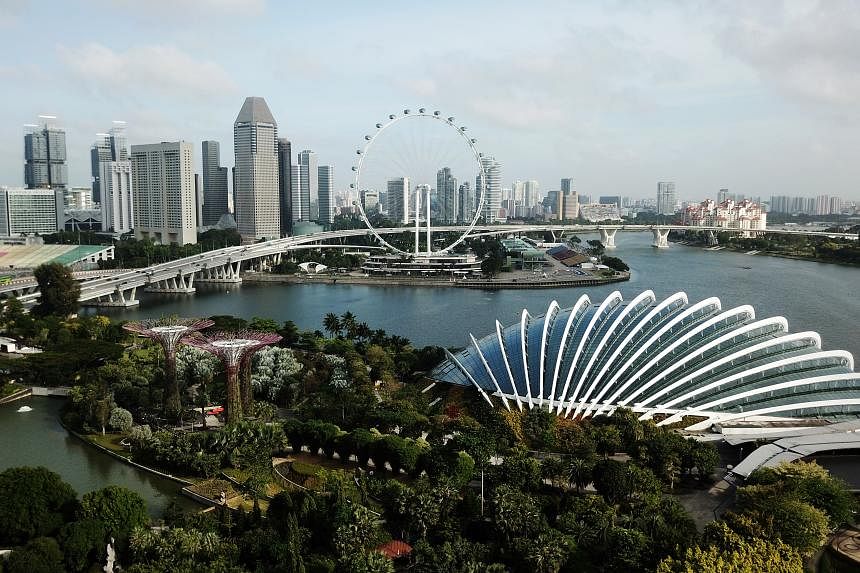SINGAPORE – Seven Singaporean youth attending the United Nations (UN) COP27 climate conference in Egypt hope to see progress in establishing a loss and damage fund, as well as details of the international trade of carbon credits being finalised.
Loss and damage refers to the irreversible consequences of climate change – such as sea-level rise – that cannot be, or have not been, reduced by current adaptation efforts such as putting up sea walls. Setting up a financing facility is crucial, as it would enable vulnerable nations to be compensated for economic losses from climate catastrophes.
Ms Terese Teoh, 21, a delegate from community organisation Singapore Youth for Climate Action (SYCA), said: “Many countries which are most vulnerable to climate change are struggling to contain the worsening effects of climate disasters.
“Rich countries have a historic role in contributing to the bulk of carbon emissions and, with their tremendous economic leverage today, should also be the ones to finance loss and damage,” added the student, who is attending the COP conference for the first time.
The UN Climate Change Conference, which is being held from Nov 6 to 18 at the seaside town of Sharm el-Sheikh, brings together leaders from almost 200 nations to discuss details on how climate action can be taken, such as by reducing greenhouse gas emissions or providing funding to poorer countries to help them better adapt to climate change.
Singapore is sending seven youth delegates to COP27. They will observe how negotiations work and take part in panel discussions on issues such as climate change solutions and youth activism in Singapore. Five of the delegates are from SYCA. The other two are Ms Woo Qiyun – who runs Instagram Page @theweirdandthewild, which showcases illustrations on various aspects of climate change – and Mr Xuan Zi Han, a student and climate advocate at Youngo, the youth constituency of the UN Framework Convention on Climate Change.
Ms Kate Yeo, 20, a student delegate from SYCA, has her eyes on the details of how the international trade of carbon credits will be rolled out.
At COP26 in November 2021, countries agreed on the rules that will govern the trade so that carbon credits can be used to offset emissions to help meet nations’ climate targets.
One option is to buy credits from a centralised marketplace that will be set up and overseen by the UN. Negotiators in Egypt are expected to fine-tune the criteria for carbon projects and determine the methodologies to approve the projects.
Ms Yeo feels this is important as Singapore may have to rely quite heavily on these carbon credits to decarbonise. The Republic said it will reach net-zero greenhouse gas emissions by 2050.
“We need a robust international framework to ensure that companies genuinely take ambitious steps to cut their absolute emissions, not just buy carbon credits while continuing to pollute the atmosphere,” she added.
Ms Yeo, who has participated in UN environment negotiations virtually since 2020, said: “Young people bring a different energy and sense of urgency into these spaces. We’re there to tell world leaders that we need to do more now, not just in 2030 or in 2050.”
Likewise, sustainability professional Swati Mandloi, 27, who is also representing SYCA and has attended two COP conferences, hopes there will be more confidence in the short-term decisions made by countries to meet the world’s long-term targets. These would be to limit global warming to 1.5 deg C by reaching net-zero emissions by 2050.
Climate scientists have shown that curbing warming to 1.5 deg C will help the world avert more drastic climatic impacts. But a report released by the UN in October showed that current pledges would send the world on a trajectory of 2.8 deg C warming by the end of the century.
In light of the report’s release, Ms Woo, 25, a sustainability professional, hopes stakeholders will heed the science behind climate change and be more ambitious in their emissions reduction goals.
“I’m hoping to... see corporations taking an active role in supporting ambitious decarbonisation efforts, committing to transform the way they do business, and engaging youth advocates in those difficult conversations and decisions,” she said.
Ms Woo, who is attending COP for the first time, hopes to communicate the COP happenings through social media and illustrations to make the conference more accessible to the public.
The youth are also excited about Singapore’s pavilion, which will showcase its climate leadership in making the green transition, and present the nation’s innovations and solutions for tackling climate change.
Said Ms Teoh: “One section of the pavilion will be showcasing various activities from the local environmental community. Having been in the environmental scene for about five years now, I feel so proud of how far we’ve come.” But she recognises that the pro-climate fight is far from over. For instance, at the individual level, indifference to the climate crisis still persists and many still lead “resource-intensive lifestyles”, she noted.


